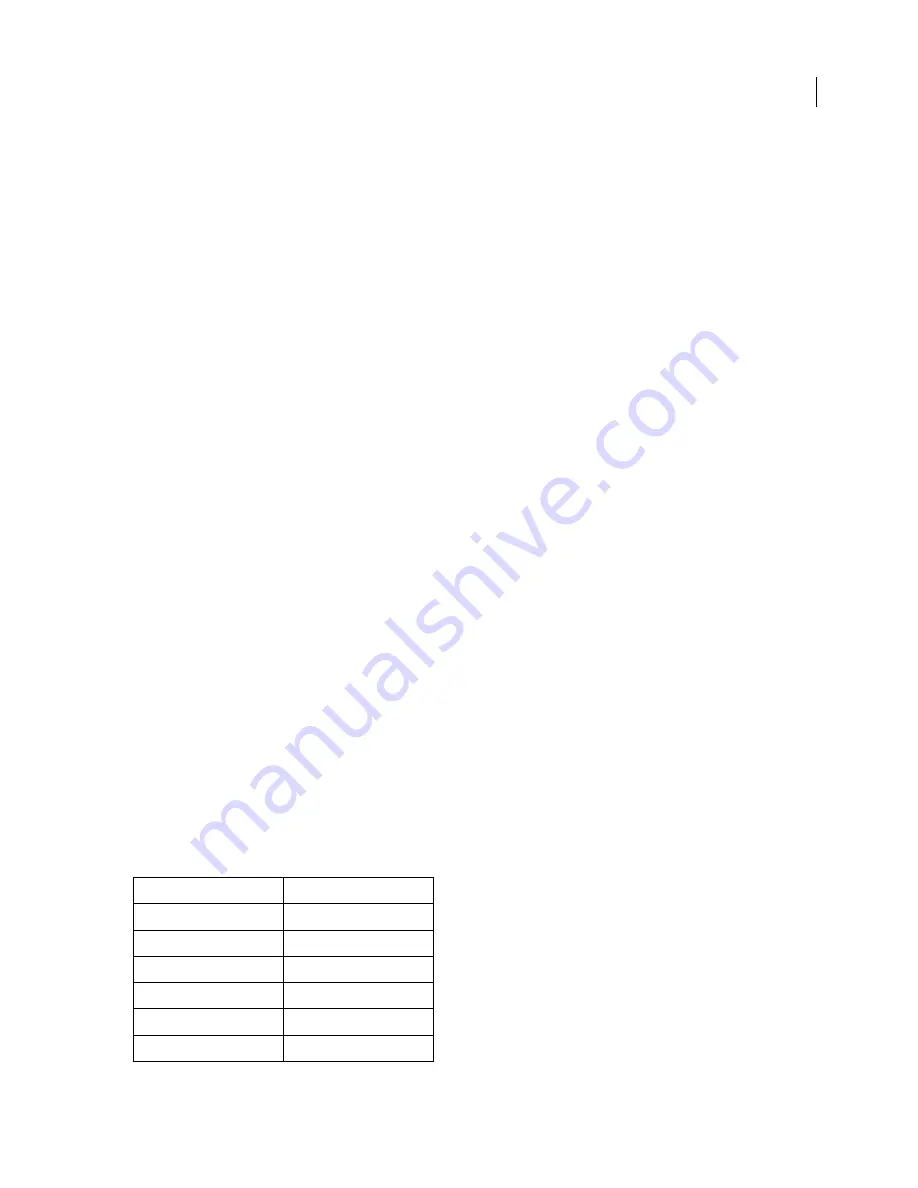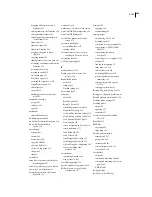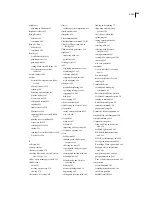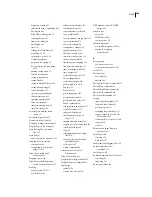
FLASH CS3
User Guide
491
Displaying special characters
Computer systems have a specific code page that is regional. For example, a computer in Japan has a different code
page than a computer in England. Flash Player 5 and earlier versions relied on the code page to display text; Flash
Player 6 and later versions use Unicode to display text. Unicode is more reliable and standardized for displaying text
because it is a universal character set that contains characters for all languages. Most current applications use
Unicode.
You can use Unicode escape sequences to display special characters in Flash Player 6. However, not all your
characters display correctly if you do not load text that is UTF-8 or UTF-16 encoded (Unicode) or if you do not use
a Unicode escape sequence to display the special character. For a set of Unicode code charts, see the Unicode web
site at Unicode.org. For a list of commonly used escape sequences, see the table that follows in this section.
A non-Unicode application uses the operating system’s code page to render characters on a page. In this case, the
code page specifies the characters you see, so the characters appear correctly only when the code page on the user’s
operating system matches the application’s code page. The code page that was used to create the SWF file needs to
match the code page on the end user’s computer. Using code pages is not a good idea for applications that an inter-
national audience might use; in this case, use Unicode instead.
Using
System.useCodepage
in your code forces the SWF file to use the system’s code page instead of Unicode.
Only use this process when you are loading non-Unicode encoded text from an external location and when this text
is encoded with the same code page as the user’s computer. If both these conditions are true, the text appears without
a problem. If both of these conditions are not true, use Unicode and a Unicode escape sequence to format your text.
To use an escape sequence, add the following ActionScript 2.0 on Frame 1 of the Timeline:
this.createTextField("myText_txt", 99, 10, 10, 200, 25);
myText_txt.text = "this is my text, \u00A9 2004";
This ActionScript creates a text field, and enters text that includes a copyright symbol (
©
).
You can make a SWF file use the operating system’s code page, which is controlled by the
useCodepage
property.
When Flash exports a SWF file, it defaults to exporting Unicode text and
System.useCodepage
is set to
false
. You
might encounter problems displaying special text, or text on international systems, where using the system’s code
page can seem to solve the problem of text incorrectly displaying. However, using
System.useCodePage
is always a
last resort.
To use the system’s code page, place the following line of AS 2.0 code on Frame 1 of the Timeline:
System.useCodepage = true;
Important:
A special character can appear only if the user’s computer has the character included in the font that is being
used. If you are not sure, embed the character or font in the SWF file.
The following table contains a number of commonly used Unicode escape sequences.
Character description
Unicode escape sequence
em-dash (
—
)
\u2014
registered sign (
®
)
\u00AE
copyright sign (
©
)
\u00A9
trademark sign (
™
)
\u2122
Euro sign (
€
)
\u20AC
backslash (
\
)
\u005C
















































